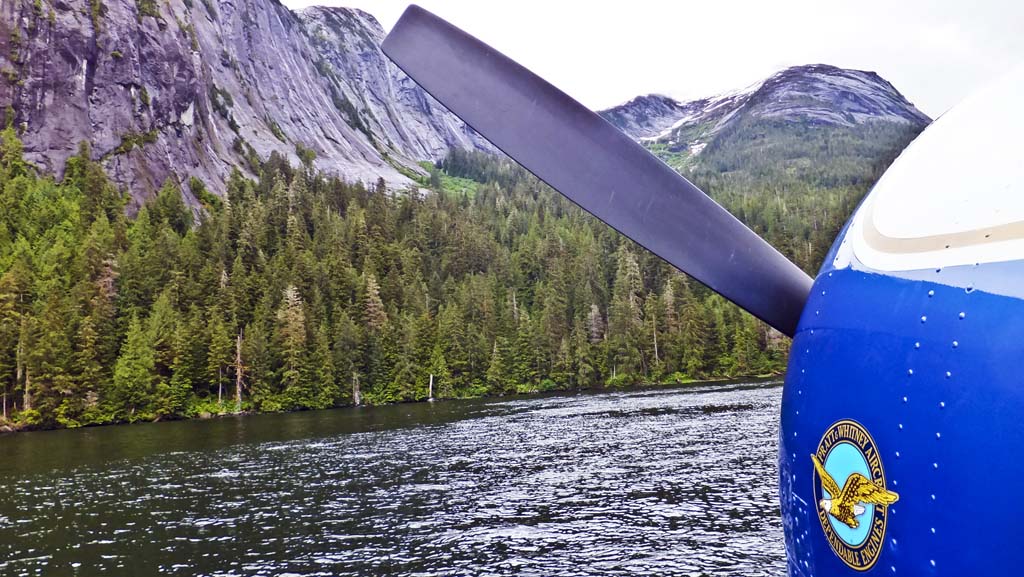
In the rest of the world, planes take off from a runway. In Alaska, almost any stretch of water will do.
Today on a shore excursion from a cruise on Oceania Cruises we’re going to take what I think is the quintessential float plane experience: flightseeing from Ketchikan over the Misty Fjords and a landing on the water in the national wilderness reserve. We’ll be doing it Alaska style in a vintage propeller plane from the 1950s.
And fortunately, it seems the weather is on our side as Oceania’s Regatta sails into Ketchikan. I’m convinced that they called this fishing port Ketchikan as a caution to make sure you catch the sun when you can. You can count on mist or rain most every day along this part of the Alaska Panhandle.
Today, while there are occasional brief showers, the brilliant sun is out long enough to give me confidence there will be great views as we’re flying over one of the most incredible nature reserves in the world: the Misty Fjords.
They’re named Misty for good reason. Clouds get trapped by the steep cliffs that surround the deep fjords, whose rocky sides are in many cases nearly perpendicular to the water. The fjord walls are just as just as steep under water as well, so that even a narrow inlets can have water more than 100 feet deep.
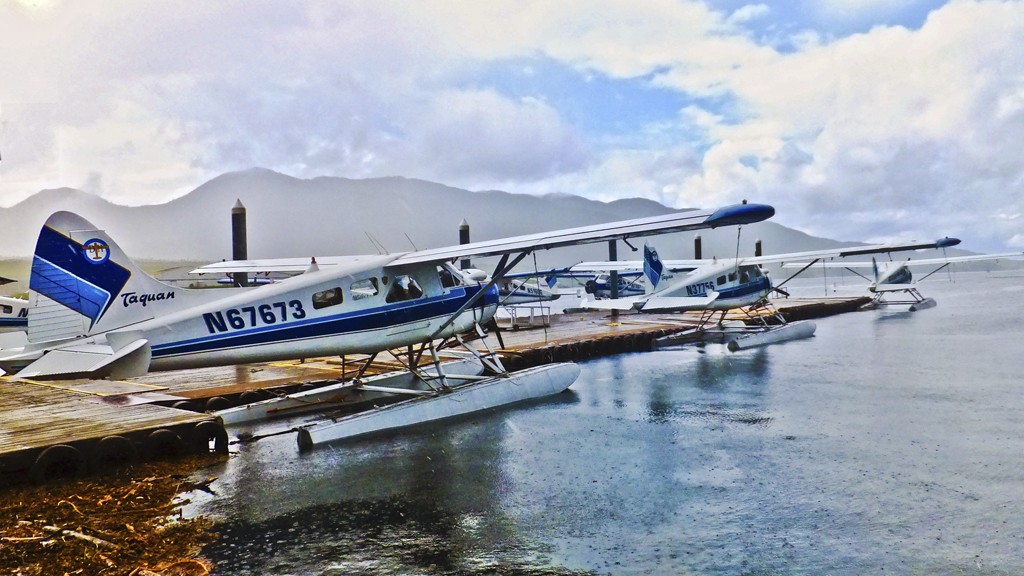
1) The Planes, the Planes
Float planes make great sense for landing in remote areas with not enough population to support an airport and the bush pilot has become a legendary occupation in the Last Frontier.
The tour company, Taquan Air, flies a squadron of vintage De Havilland Beavers: single engine planes that were built in Canada in the 1950s and 1960s and are no longer in production. But they were built to last and the demand for used Beavers is always greater than the supply. “This is a plane that actually gets more valuable with age,” our pilot Mike says.
2) Flying with Pros
Mike’s been flying float planes in Alaska for years, and when he’s not taking on tourists for flight seeing, he flies search and rescue missions or takes fishing parties to remote camps.
And they take flying seriously here. There’s nothing unlikely about a water landing on these flights. The safety briefing is remarkably thorough, including how to send a distress call. After the briefing, we walk down the dock to the plane and Mike assigns us seats to balance the load.
Fortunately, everyone gets a window seat in this very narrow six-seater.
The plane is unhooked from the dock and Mike revs up the throttle. In little more than a minute we’re airborne.
Flying over the cruise dock in Ketchikan, we buzz our ship, the Regatta, and then head out to fjord country, part of one of the world’s largest nature reserves. The Misty Fjords reserve itself is bigger than the entire state Rhode Island and it’s only one of several huge U.S. federal conservation parks on Alaska’s panhandle.
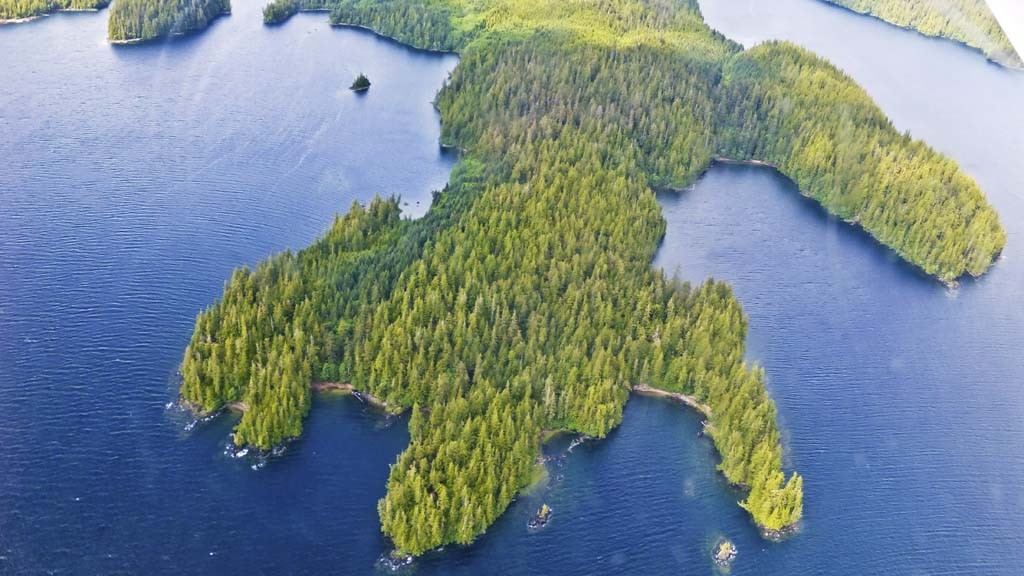
3) Getting the Big Picture
There’s no shortage of trees in this part of Alaska, as the tall timber stretches as far as the eye can see. Many steep hillsides still boast stands of virgin forest, because it’s all but impossible to get to many of these slopes, And federal rules now say that only the native Tlingit people can get logging permits in the park.
There are bare patches in the forests, but mostly they’re the result of nature doing its own pruning. Wind falls in high gusts that strafe the hills in the winter can topple entire stands of shallowly rooted pine, spruce, or hemlock trees. Mike reassures us that the bare patches will regenerate into mature stands of the fast growing evergreens in less than 20 years.
For the most part, though, this is the domain of bears, eagles and beavers where nothing but the buzz of the occasional plane disturbs the absolute stillness.
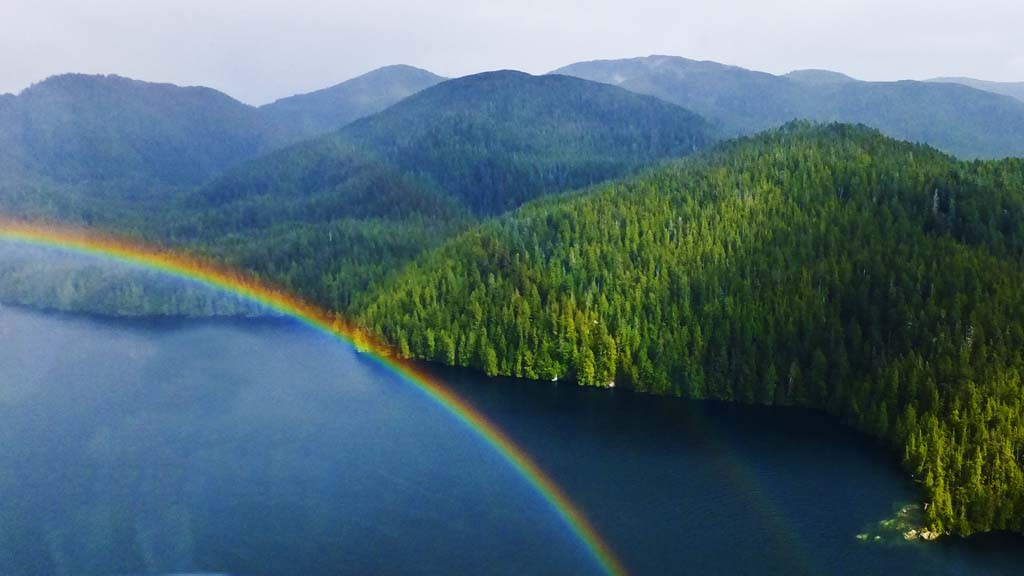
4) Seeing Rainbows Everywhere
The drops of moisture in the misty air scatters sunlight, so everywhere you look it seems there are rainbows. Big ones seem to emerge from the ground and point the way to leprechaun treasure and there are also often donut-shaped ones that seem to encircle the plane.
It’s magically colorful on the ground as well, as undisturbed patches of mosses, lichens and muskeg lichens create patterns in greens, yellows and gold. And in the distance, mountain ranges loom in misty blues and greys.
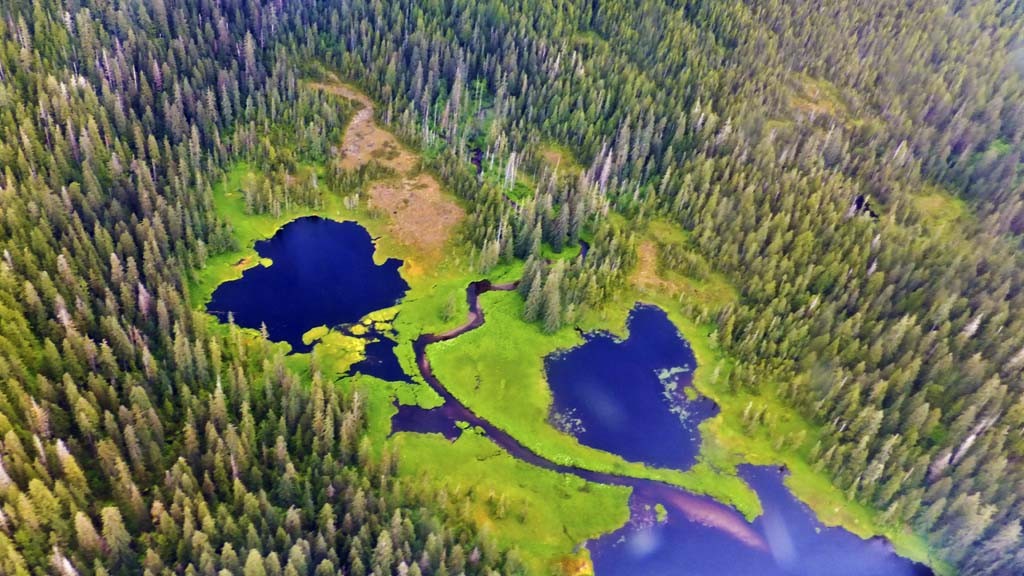
5) The absolute stillness
Mike sees an interesting arm of one of the fjords and heads down. We land as though we’re gliding just above the surface of the water and splash down with a gentle bump on the surface of a fjord.
Engine off, there’s suddenly a quiet that’s all but impossible to find in modern life. This is the road-less domain of bears, eagles and beavers where nothing but the occasional buzz of a plane disturbs the absolute stillness.
It’s time to clamber out onto a pontoon for a breath of the freshest air to be found anywhere in the continent and a look at hillsides lined with virgin forests.
Yes this is one of the pricier shore excursions you can do on an Alaska cruise, but it’s also the most authentic and memorable.






